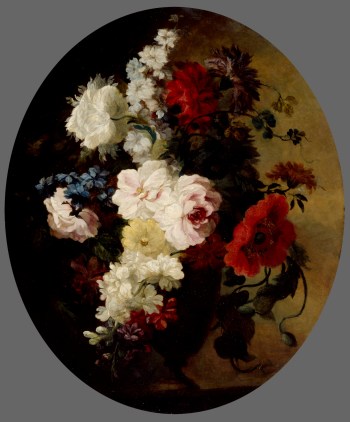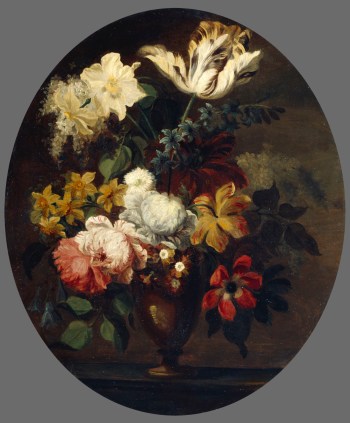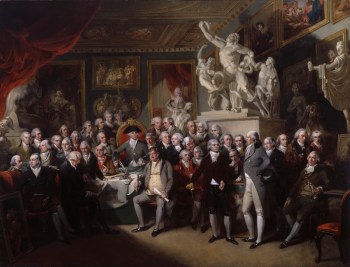Mary Moser RA (1744 - 1819)
RA Collection: People and Organisations
One of only two female Founder members of the Royal Academy, Mary Moser was highly celebrated in her own lifetime and greatly admired for her paintings of flowers.
Mary was the only daughter of the Swiss artist George Michael Moser. Her precocious talents were encouraged by her father, who trained the young Moser. She won her first medal from the Society of Arts for her closely observed flower drawings aged just 14. Ten years later, in 1768, she was invited to join the group of artists and architects who were forming the Royal Academy of Arts. She was the youngest Founder member at just 24. Her father’s inclusion as another Founder member made them the first of many parent-and-child duos to both hold the title of Royal Academician.
Although she painted portraits and historical subjects, Moser is most closely associated with flower paintings. Her skill in this area led to the position of drawing mistress to the Royal Princess Elizabeth and several royal commissions. The most notable of these came from Queen Charlotte, wife of King George III, in the 1790s. The Queen had recently been given Frogmore House as a country retreat and she commissioned Moser to decorate a room for which she wanted Moser to create the illusion of an “arbor open to the skies”. Moser designed a complex arrangement of both large-scale canvases and painted walls, all depicting English flower arrangements.
In 1793, at what was considered a relatively advanced age of 49, Moser married Captain Hugh Lloyd. It seems that Mary was a lively person and could hold her own among the artistic circles of London. The architect William Chambers thought that she ‘understands and has read so much’ that she was a great favourite in their household.
Moser continued to exhibit works at the Royal Academy under the name Mary Lloyd until 1802, when failing eyesight made her unable to keep painting. At around this time she began to take a considerably more active role in the Academy’s affairs. As a woman she was prevented from attending committee dinners, but she quite often attended General Assembly meetings in the 1790s and 1800s. She was even put forward by Henry Fuseli as a candidate to replace Benjamin West as President in 1805 – although given that Fuseli reportedly phrased his suggestion as “is not one old woman as good as another?”, it may have been intended more to mock West than support Moser.
Moser outlived her husband by several years, dying aged 74 in 1819. Her decorative scheme at Frogmore House has survived the centuries and the Mary Moser Room, is included in guided tours of the estate.
Profile
Foundation Member
Born: 27 October 1744 in London, England, United Kingdom
Died: 2 May 1819
Nationality: British
Elected RA: 10 December 1768
Gender: Female
Preferred media: Painting
Works by Mary Moser in the RA Collection
2 results
Works associated with Mary Moser in the RA Collection
1 results
Associated books
1 results
Associated archives
9 results
-
T. Lawrence, to Joseph Farington, R.A. Farington, Parrs Wood, Didsbury, Manchester
4 Nov 1808
Item LAW/1/203
-
Miss Gardiner, Upper Brook Street, to Benjamin Ralph
17 Oct [1769]
Item SA/46/6
-
Anderdon's note on Mary Moser writing to Henry Fuseli
[c.1870]
Item AND/1/151
-
William Chambers, to Charlotte Chambers
[1784]
Item TYL/18


